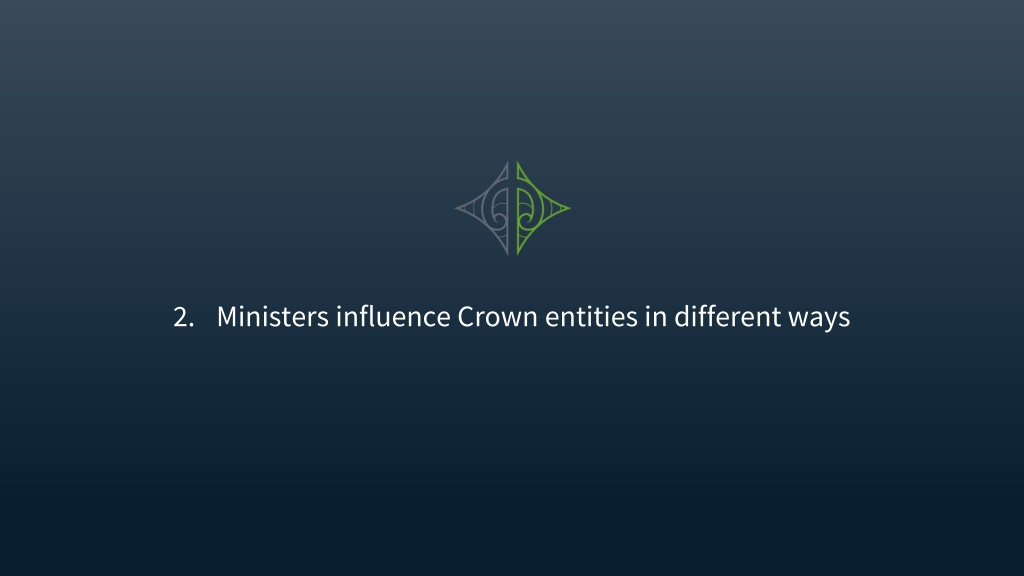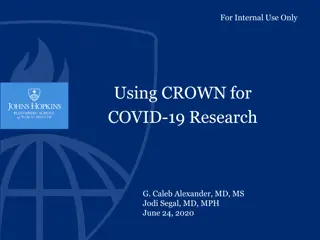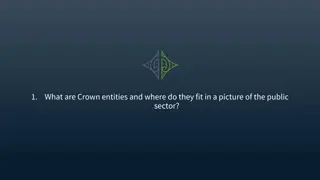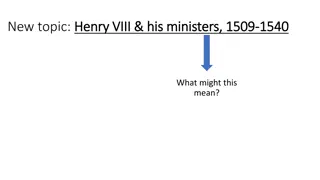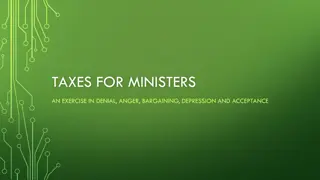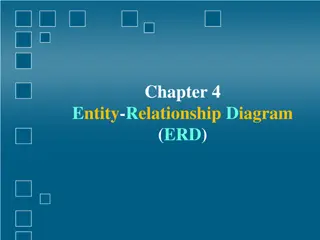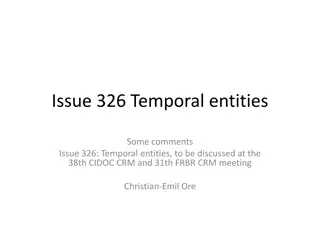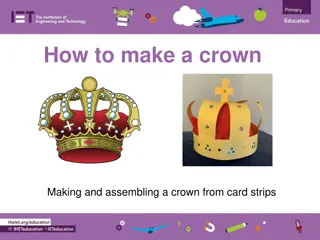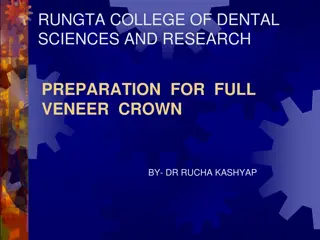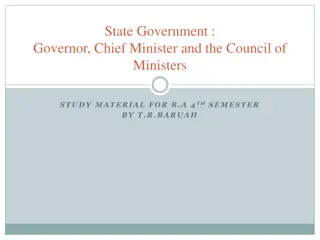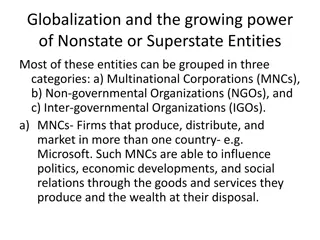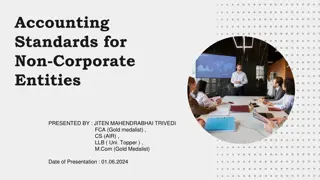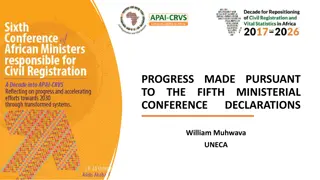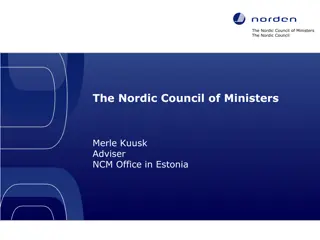Ministers' Influence on Crown Entities through Strategic Processes
Ministers influence Crown entities by appointing effective boards, engaging in dialogue, participating in strategic planning, and ensuring continuous improvement. They make appointments, hold meetings, receive regular performance reports, and guide entities in setting strategic directions. Through formal processes like the Letter of Expectations, Ministers set out their expectations for the entity’s strategic direction.
Download Presentation

Please find below an Image/Link to download the presentation.
The content on the website is provided AS IS for your information and personal use only. It may not be sold, licensed, or shared on other websites without obtaining consent from the author. Download presentation by click this link. If you encounter any issues during the download, it is possible that the publisher has removed the file from their server.
E N D
Presentation Transcript
by appointing and maintaining a strong and effective board Appointments are mostly made by Ministers; ICE board members are appointed by the Governor-General. Ministers recommendations for appointment almost always go to the Cabinet Appointments and Honours Committee (APH) and often to the government caucus. Appointments are for a fixed term. Appointees may be offered a second or subsequent term of office, but there is no guarantee of this. Ministers and the Governor-General have powers of removal. There is no compensation or other benefit for loss of office.
. by participating in ongoing dialogue and engagement with entities through: Meetings Ministers typically hold regular meetings with the board chair (or with senior management, as authorised by the board) to discuss strategic issues. Monitoring department representatives will often be present. Ministers may also have periodic meetings with the full board. Briefings Boards are expected to advise their Minister in advance of any major initiatives or developments. See also no surprises . Regular reporting Entities provide their Ministers with regular performance reports. Informal engagement between boards and responsible Ministers contributes to more formal processes within the strategic planning and performance cycle (see next slides).
By participating in the strategic planning and performance cycle In general, entities report formally on a quarterly or six-monthly basis. Ministers can ask for information at any time and entities will update Ministers on critical issues as they occur. Reports to Parliament Reports to Minister
Continuous improvement: the strategic planning and performance cycle Set direction: Strategic intentions next 4 years - identity strategy, indicators & areas for change Depending on service complexity, these steps often align with stages in the strategic planning-performance cycle. This approach can guide development of the entity Statement of Intent. Review: What was the impact of our interventions? How can we improve? What were the unintended consequences? Plan: best way to achieve objectives, our capability. Our best options Implement, deliver & monitor: Are services delivered as planned. What do the recipients think? Are we managing our risks? Can we adjust?
Ministers exert influence through the range of formal strategic direction-setting processes, such as: (1) The Letter of Expectations A letter of expectations may be used to set out a Responsible Minister s expectations for: the Crown entity s strategic direction its governance and performance specific priorities for the planning period monitoring and information requirements.
(2) The Statement of Intent (SOI) The SOI is the centrepiece of the accountability relationship between a Crown entity board and its Minister (to be provided at least every 3 years). It must cover at least four financial years. Through strategic discussions, in consultation with the Minister, a board outlines its strategic thinking and future intentions and frames its actions. A decision can then be taken as to whether a new SOI is required. The SOI should reflect Government s objectives for both the sector and for individual Crown entities, and wider Government policy initiatives and themes. Treasury provides guidance on the development of the SOI.
through a range of other processes and agreements such as: Statement of Performance Expectations Details the outputs to be supplied and what they are to achieve, identifies expected revenue and proposed expenses, and explains how performance will be assessed. It is produced annually and tabled in the House. Memorandum of Understanding (MOU) Sometimes used to document the Government s performance expectations of a Crown entity and enable the Minister and the entity to record their understanding of the basis for monitoring, and accountability of the entity. The MOU is not a legal instrument but supplements the SOI. Annual Report An assessment of performance against strategic intentions in the SOI. An assessment of the performance outlined in the SPE. Tabled in the House annually.
by monitoring Crown entity performance Ministers oversee and manage Crown entities (and are answerable to Parliament for their entities performance). They obtain advice from monitoring departments about the entities' effectiveness and efficiency, and how any risks will be managed. Ministers can require Crown entities to supply a wide range of information. They rely on good reporting from the entity and are assisted by monitoring departments as their agents . Ministers are able to formally review a Crown entity s operations and performance at any time (s.27 of the CEA).
Ministers have powers to direct some Crown entities Ministers may direct a Crown Agent or ACE (i.e. in relation to a government policy that relates to the entity s functions and objectives). The Ministers of Finance and for the Public Service may issue directions to apply a Whole of Government approach to Crown entities (e.g. relating to Information and Communications Technology). Ministers must consult with affected entities before issuing directions. All directions must be in writing. They are tabled in Parliament and notified in the Gazette.
Ministers have many levers to get the performance they want These levers may be in legislation such as those in the Crown Entities Act e.g. the power to appoint and remove board appointees. Many are by convention i.e. good practice expectation of boards to undertake self-review and periodic independent evaluation. A useful two-page guide of those levers is available at https://www.publicservice.govt.nz/assets/SSC-Site- Assets/System-and-Agency-Performance/Statutory-crown-entities-performance-levers-for-ministers-A3.pdf
